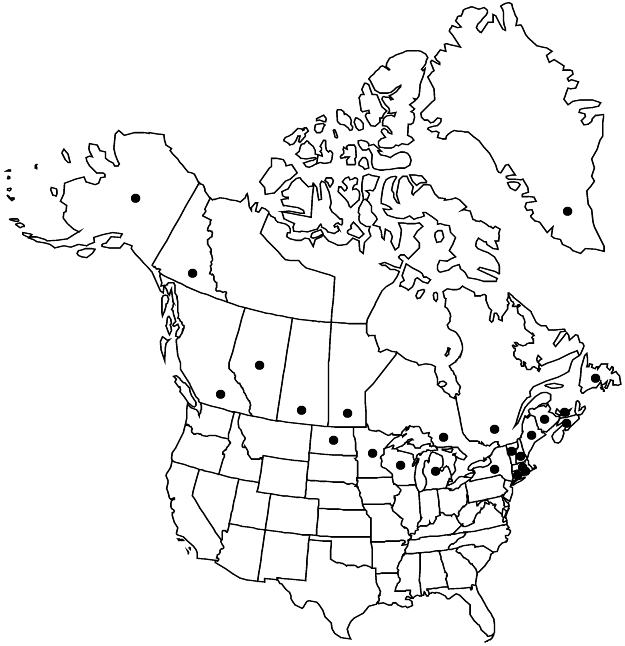Rumex longifolius
in J. Lamarck and A. P. de Candolle, Fl. Franç. ed. 3, 6: 368. 1815.
Plants perennial, glabrous or very indistinctly papillose normally only on branches of inflorescence, or on veins of leaf blades abaxially, with fusiform, vertical rootstock. Stems erect, branched distal to middle, 50–120(–160) cm. Leaves: ocrea deciduous or partially persistent at maturity; blade broadly lanceolate to ovate-lanceolate or oblong-lanceolate, normally 25–50(–60) × 7–15 cm, ca. 3–4 times as long as wide, base broadly cuneate, rounded-truncate, or slightly cordate, margins entire, undulate or weakly crisped, occasionally flat, apex acute or subacute. Inflorescences terminal, occupying distal 1/2 of stem, normally dense, narrowly paniculate, branches usually straight or arcuate. Pedicels articulated in proximal 1/3, filiform, 4–9 mm, articulation distinctly swollen. Flowers 10–20 in whorls; inner tepals broadly orbiculate or reniform, (4.5–)5–6(–7) × (4.5–)5–7(–7.5) mm, base usually distinctly cordate, margins entire or subentire to very weakly erose, flat, apex obtuse or, rarely, subacute; tubercles normally absent,sometimes with 1 indistinct tubercle or slightly thickened midvein less than 1–1.3 mm wide. achenes dark brown or brown, (2.5–)3–3.5(–4) × 1.5–2 mm. 2n = 60.
Phenology: Flowering late spring–summer.
Habitat: Waste places, roadsides, cultivated fields, river valleys, meadows
Elevation: 0-1000 m
Distribution

Introduced; Greenland, Alta., B.C., Man., N.B., Nfld. and Labr. (Nfld.), N.S., Ont., P.E.I., Que., Sask., Yukon, Alaska, Conn., Maine, Mass., Mich., Minn., N.H., N.Y., N.Dak., R.I., Vt., Wis., n temperate Europe, w temperate Asia, introduced elsewhere.
Discussion
Most records of Rumex longifolius from the Great Plains (Great Plains Flora Association 1977; R. B. Kaul 1986) refer to R. pseudonatronatus (J. E. Dawson 1979), which can be distinguished from R. longifolius by its narrower leaves, smaller and more distinctly triangular inner tepals, and purplish or reddish brown stems at maturity. The two species are closely related; they were placed by K. H. Rechinger (1949) in subsect. Longifolii Rechinger f.
Selected References
None.